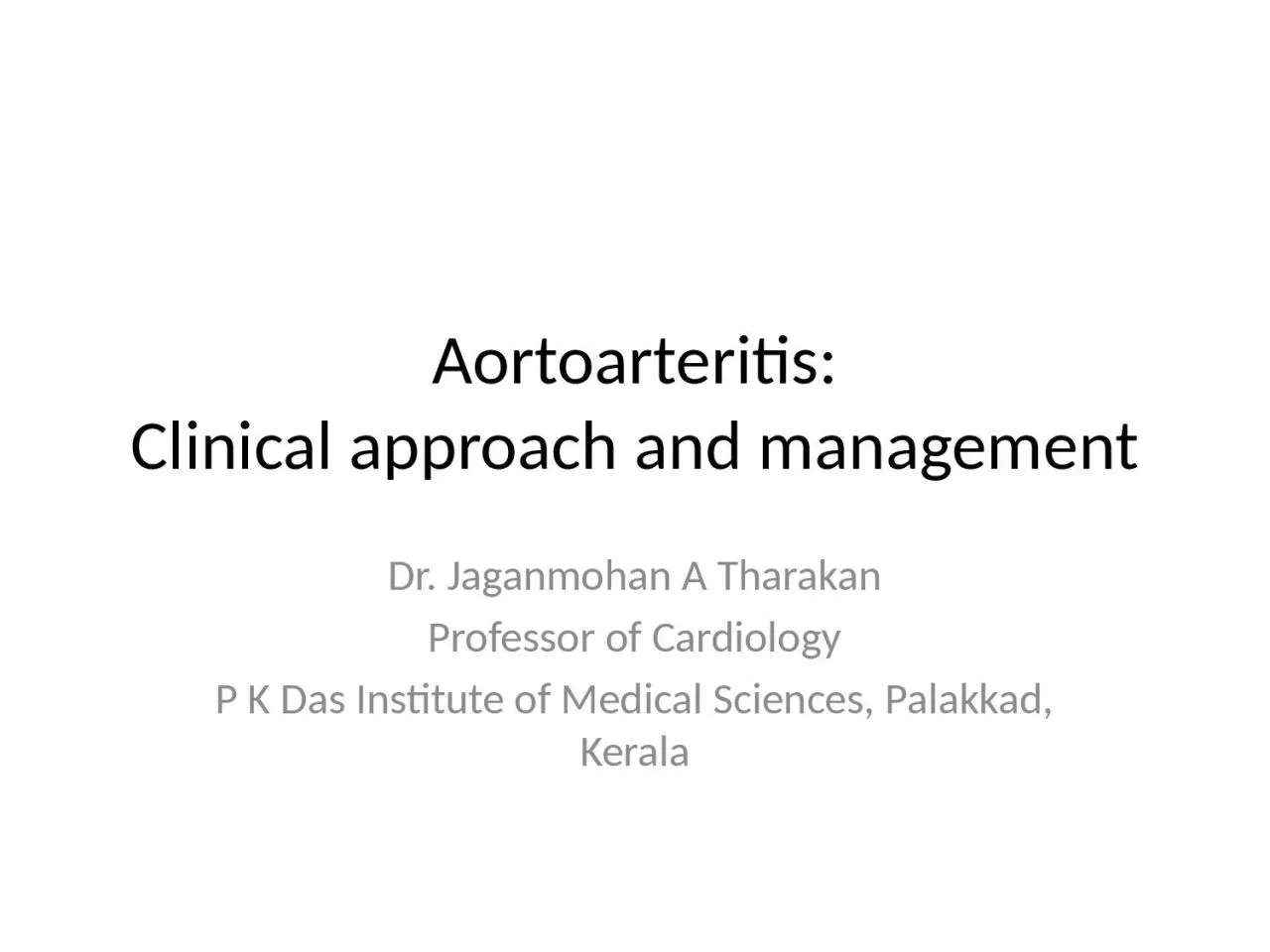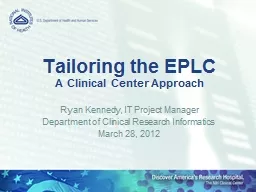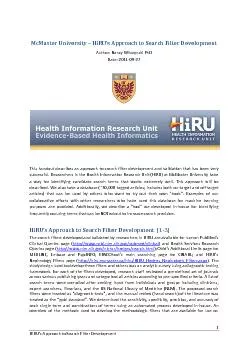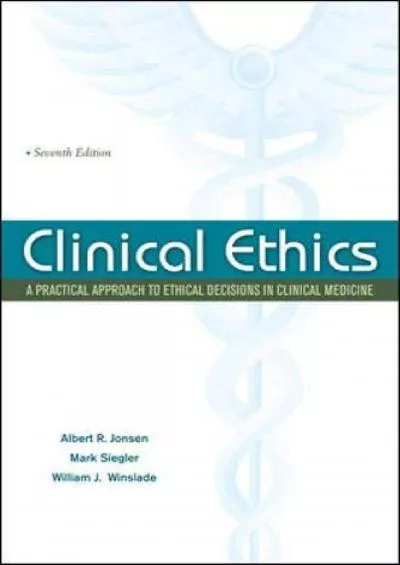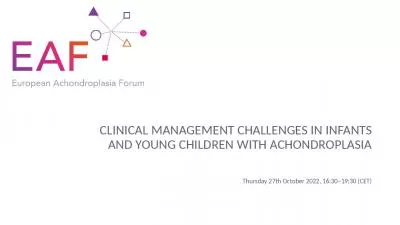PPT-Aortoarteritis : Clinical approach and management
Author : phoebe | Published Date : 2024-02-09
Dr Jaganmohan A Tharakan Professor of Cardiology P K Das Institute of Medical Sciences Palakkad Kerala Takayasu Arteritis History 1830 Yamamoto described the
Presentation Embed Code
Download Presentation
Download Presentation The PPT/PDF document "Aortoarteritis : Clinical approach and m..." is the property of its rightful owner. Permission is granted to download and print the materials on this website for personal, non-commercial use only, and to display it on your personal computer provided you do not modify the materials and that you retain all copyright notices contained in the materials. By downloading content from our website, you accept the terms of this agreement.
Aortoarteritis : Clinical approach and management: Transcript
Download Rules Of Document
"Aortoarteritis : Clinical approach and management"The content belongs to its owner. You may download and print it for personal use, without modification, and keep all copyright notices. By downloading, you agree to these terms.
Related Documents

